 |
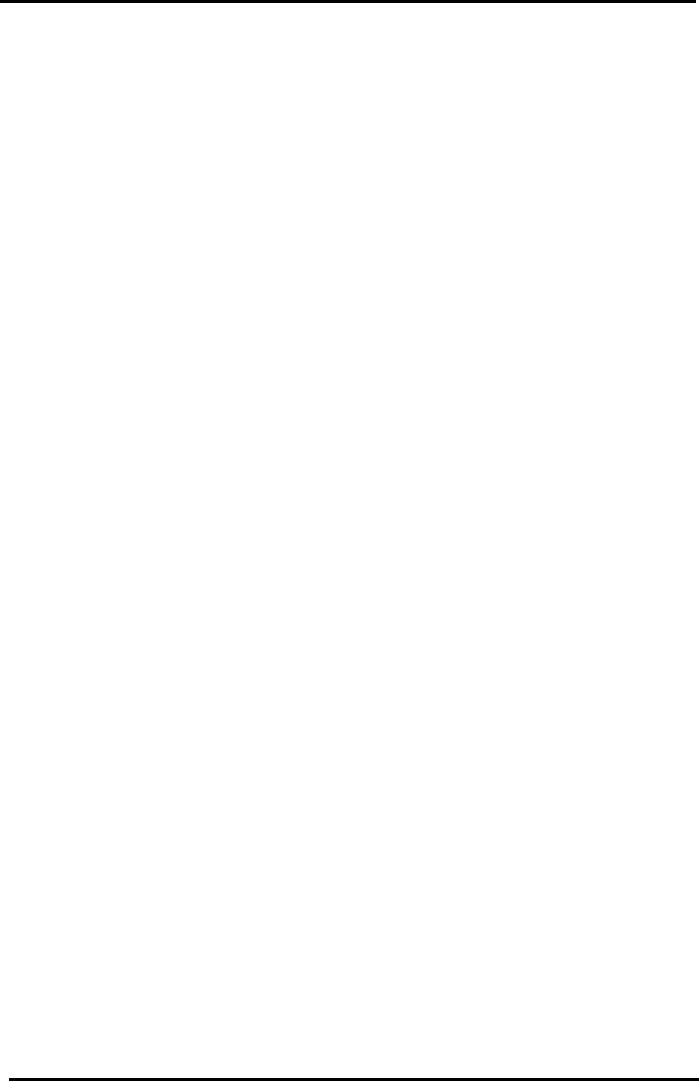
Financial
Management MGT201
VU
Lesson
30
BUSINESS
RISK FACED BY FIRM,
OPERATING LEVERAGE, BREAK
EVEN POINT&
RETURN
ON EQUITY
Learning
Objectives:
After
going through this lecture,
you would be able to have an
understanding of the following
topics
�
Business
Risk faced by FIRM
�
Operating
Leverage (OL)
�
Breakeven
Point & ROE
In
this lecture, we are going
to continue our discussion on
weighted average cost of
capital and we
will
begin our discussion on the
concept of operating leverage.
Both of these concepts are
of the area
which
we have stated in the previous lecture
called capital structure.
In
capital structure we decide what the
distribution of debt and equity
should be in the firm and it
is
decided by the board of directors of the firm or
company. The job of deciding
what amount of debt
and
equity one has is
difficult.
So,
the first thing is to calculate the cost
of capital. so, the company has the
option that it may
either
go into money market or into
the capital market to raise
money either through debt or
through
equity
. Now, you might think the
equity the company might raise
has no cost. We all know
that when a
company
takes a loan it has to pay
interest or mark up on it but often
people think when it raise
fund
through
equity in stock exchange then there is no
cost attached to it because
they are not paying
any
fixed
rate of interest with regular intervals
.but that is mistake because there is
cost attached to it in
form
of
required rate of return which
your stock holder expects to
receive that and if company does
not pay
that
then the stock holder will
sell their shares and the
price of the share will go
down .Therefore it is
important
to calculate the cost of equity.
Now,
let's combine all the
cost associated with the
debt, preferred stock and
equity and
calculate
the weighted average cost of
capital (WACC) of company that
raise capital in all
three
possible
ways.
Example:
Suppose
company ABC has equal
amounts of debts, common stocks and
preferred equity 1/3
each
.in previous lecture, we
calculated what the cost of
debt was that was
11.2% then we calculated
the
cost
of preferred equity that was
16.7% and we also calculated the cost of
common equity which
was
22.7%
it was the most difficult
part of the WACC calculation
now, it is easy because we
are to apply
the
%of three different forms of
capital.
WACC=
rDxD+rExE+rPEp
=11.2
%( 1/3) +16.5 %( 1/3) +22.7
%( 1/3)
=16.9%
Now,
this is over all cost
for a company .what does it
mean? It means that it is the
average cost
that
company has to bear in order to
use the capital of investors. The
cost of debt or bond,
preferred
equity
and common stock this is the average of
all three securities cost.
It
means that the company should
invest in a project where the rate of
return is higher than
16.9%
because it should be higher
than the cost that it has to
pay to the investors. Let's see the
graph of
weighted
average cost of capital
compared to the security market
line we discussed in capital
asset
pricing
model (CAPM).
It
is important to understand this graph
because it combines the market factors in
the form of
SML
as well as the company's internal
cost in the form of WACC. It
shows that what combinations
of
the
risk & return for a
particular company to invest in or
not.
128
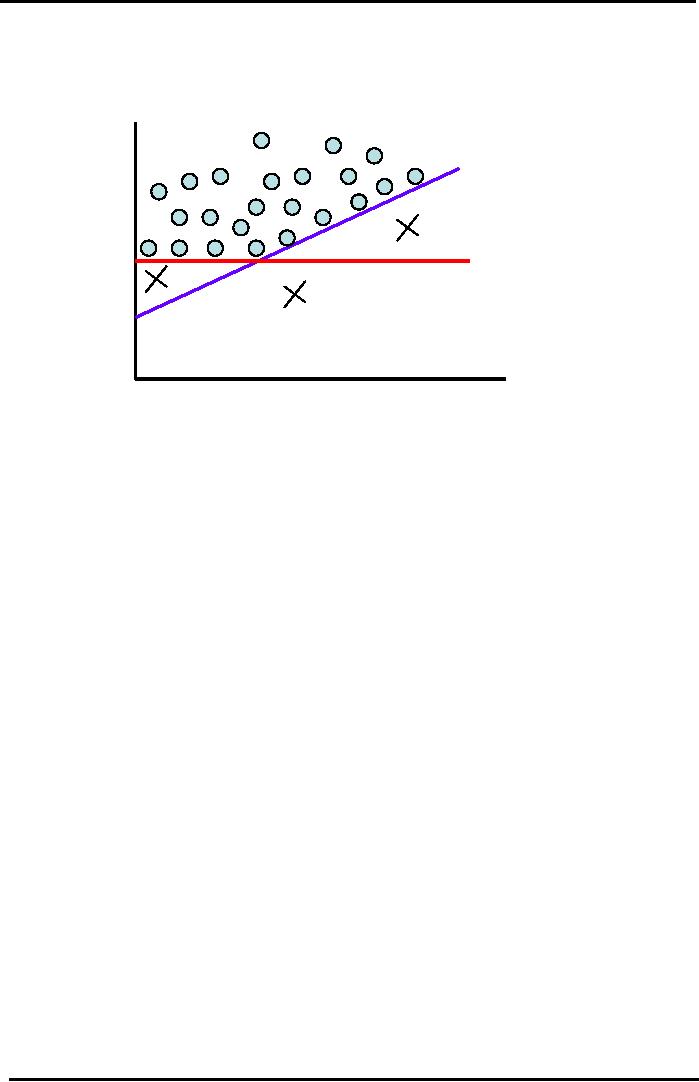
Financial
Management MGT201
VU
SML
WACC Graph
Required
FEASIBLE
REGION (where
SML
Line
ROR
rCE
(%)
IRR
of investment or
(EXTERNAL
project
is more than SML
MARKET
and
WACC)
criterion)
IRR
< SML
1
WACC
Firm's
own
WACC
3
IRR
< WACC
2
(INTERNAL
rRF
= T-
IRR
<WACC < SML
criterion)
Bill
rate
Beta
Risk
The
graph is a combine presentation of CAPM
and WACC.it shows the expected
return against
the
market risk or beta. In graph, the
upward sloping line is SML and it is the
requirement for bond
and
stocks
in efficient markets where there are
rational investors that are
maintaining fully
diversified
portfolio
and where knowledge spread
very quickly through the
markets. The risk and
return
combinations
of all securities should lie on
SML. The horizontal line is
WACC which is fixed at
16.9%
we
have just calculated it .This represents
required rate of return. In other words,
if the company invests
in
any new project it should
give a rate of return which is
higher than 16.9% you
see that the only
feasible
reason where that company made
investment is the area which I have shown
filled up with dots
and
this is higher then the SML
and WACC. I have also made
three crosses which represents
that why
will
not company invest in these
areas? The first cross on
right side X1 is showing rate of
return which
is
higher than WACC but
lower than SML the company will
not invest because it is not
giving as much
rate
of return as efficient market is
offering .The second cross
x2 is lower than WACC and SML
and
cross
three x3 is lower than WACC
but it is on the SML again the company
will not invest in these
two
projects
or regions.
It
will invest only in dots
regions on these two regions the cost is
higher and the return is
lower.
Debt
vs
Equity
from
Firm's Point of
View
Remember,
that it is mentioned that
generally speaking companies want to keep
the balance
both
in form of debt and equity. We have
also mentioned that debt
has a risk attached with it
because
when
we have to service the regular loan mark
up or interest which will eat
away your income and the
result
will be net loss. you know
that in income statement we deduct
certain financial charges
.it may be
due
to many reasons because the company
has to serve the debt .the
other reason is that if the
company
do
not pay interest it may
close down so, then
why do companies take debt
?
Issuing
Debt (or Leverage)
Advantages
of Issuing Debt::
Limited
fixed Interest payment - no
share in profits
Limited
Life
Interest
Payment is an Expense i.e. Tax
Deductible
Can
Improve (or Amplify) the
Return on Equity
(ROE)
Disadvantages:
Debt
adds to Company-specific
Risk
If
company doesn't pay Interest, it
can be closed down
Issuing
Equity (generally Common Equity or
Ownership)
129
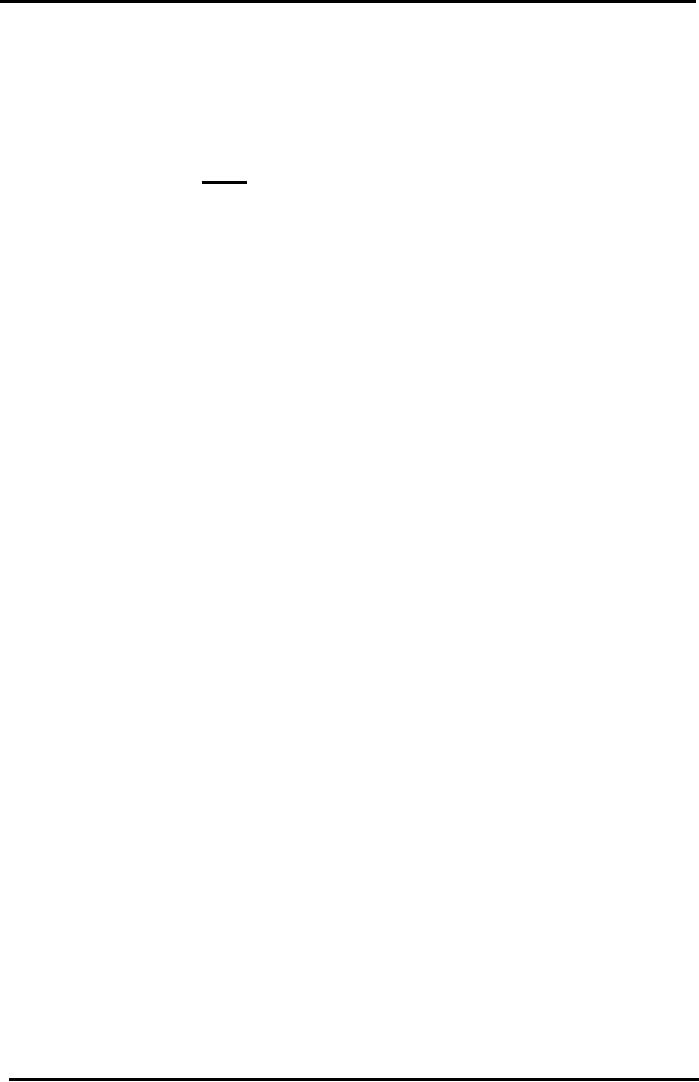
Financial
Management MGT201
VU
Advantages
of
Issuing Equity:
Not
required to pay fixed
regular Dividends
Capital
Structure is a Firm's Mix of Debt &
Equity
Risks
Faced by Firm:
Total
Stand-Alone Risk of a Stock
(from Risk and CAPM
Theory):
Stock's
Total Stand Alone Risk =
Diversifiable + Market
Company-specific
Risk: Unique,
Diversifiable
Market
Risk: Systematic, Not
Diversifiable
Total
Stand-Alone Risk of a FIRM
(New)
Firm's
Total Stand Alone Risk =
Business + Financial
Business
Risk:
It
is defined as the Risk of All Assets
& Operations (without debt). Includes
both
Company-Specific
(and Diversifiable) & Market
Risks.
Financial
Risk:
Additional
Risk faced by Common Stockholders if Firm
takes Debt. It is a pure
debt-
related
Risk.
Financial
Risk (Investor's
Point of View):
Suppose
firm ABC had a Capital Structure of
100% Common Equity. Then
the
Management
and Board of Directors of firm
ABC then decide to reduce
half of the equity
and
take
a loan (or Debt) instead.
This affects the distribution of risk
& return to the common
equity
holders (or Owners). In other words, the
Management of firm ABC has
added a new kind
of
investor. The debt holder
faces almost no risk because he is
"guaranteed" the Interest
payment
at all costs whether or not
the firm is making profit or
whether or not the equity
owners
are
paid dividend. Debt holders
eat away at the owners' (or
equity holders') money at
almost
no
risk. So, naturally, the
risk faced by equity holders increases
because same Business Risk
is
now
shouldered by fewer Equity Shares.
Risk per Share Increases.
Generally Speaking,
Increasing
Debt Shifts More Risk
Upon the Shareholders. Therefore required
ROR demanded
by
the Common Equity Holder also
increases (based on CAPM
Theory).
Firm's
Total Stand Alone Risk (Uncertainty
in ROA & ROE):
Firm's
Total Stand Alone Risk
measured by the Uncertainty or
Fluctuations in Possible
outcomes
for
Firm's Future overall
ROR.
If
Business has Debt & Equity
(i.e.
levered firm):
Firm's
Overall ROR = ROA = Return on
Assets = Return to Investors /
Assets = (Net
Income
+ Interest) / Total
Assets
Note:
Total Assets = Total
Liabilities = Debt +
Equity
If
Business is 100% Equity (or
un-levered firm)
No
Debt and No Interest.
Firm's
Overall ROR = Net Income /
Total Assets. For 100%
Equity Firm, Total Assets
=
Equity.
So Overall ROR = Net Income /
Equity = ROE!
Note:
Net Income is also called
Earnings.
Note:
ROE does not equal rE (Required Rate of Return).
ROE is Expected book return on
Equity.
Used
in Stock Valuation Formula to calculate
"g" & "PVGO"
Fluctuations
in ROE = "Basic Business
Risk"
You
should review Financial
Accounting Ratios for better
understanding of the above
mentioned
concepts.
Basic
Business Risk (Not
Considering Debt):
Causes
of High "Basic Business Risk" or
Uncertainty or Volatility or
"Instability" or "Shocks"
Large
changes in Customers' Demand
(seasonality)
Unstable
Selling Price (unstable markets and
retailers)
Uncertainty
in Input Costs (raw
material, labor,
utilities)
Inability
of Management to Change Operational
Tactics and Strategy to Meet
Changing
Environment
Ineffective
Price Stabilization
Poor
Product R&D and Planning
High
Operating Leverage
(OL)
130
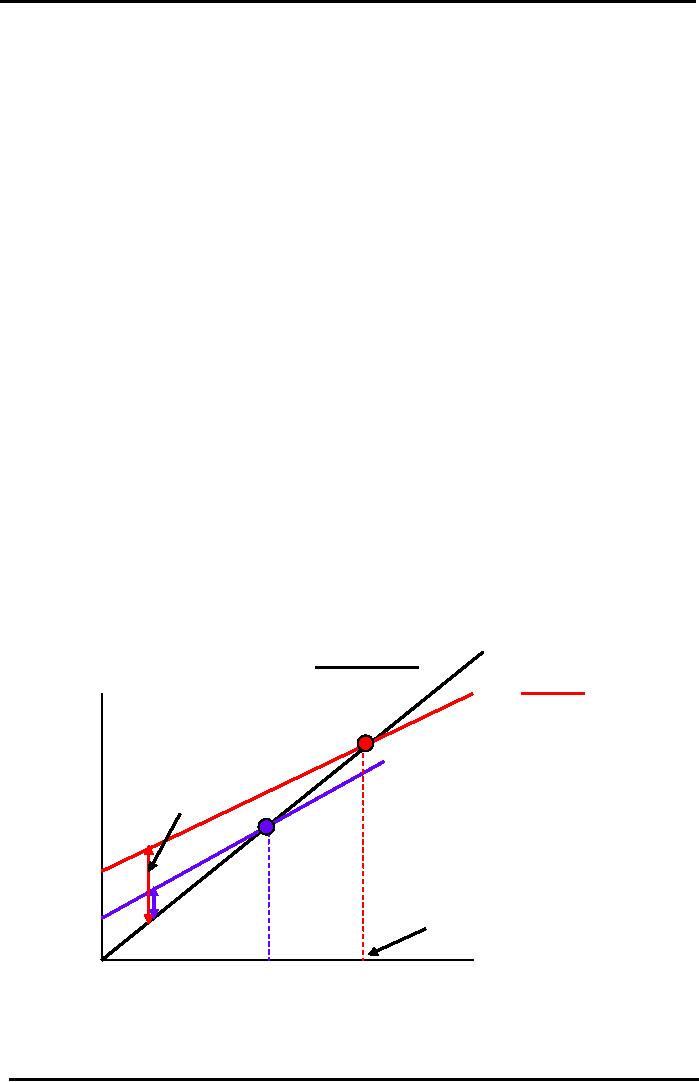
Financial
Management MGT201
VU
Many
other causes
Operating
Leverage (OL):
Formula
= Fixed Costs / Total
Costs
Concept:
High OL Increases Risk:
Customer Demand Falls but
Fixed Costs remain high.
So,
Small
Decline in Sales Can Cause
Large Decline in ROE.
Fixed
Costs Across Different
Industries:
Plant,
Machinery, Equipment i.e. Power
Plant, Cement, Steel, Textile
Spinning
New
Product Development, R&D Costs i.e.
Pharma, Auto, IT
Highly
Specialized & Skilled Workers i.e.
IT
OL
used in Capital Budgeting &
Capital Structuring Decisions
Operating
Leverage Application to Capital
Budgeting
Example:
Comparing
2 Types of Technologies for
Cement Manufacturing:
(1)
Wet Process and (2)
Dry Process. Different Total
& Fixed Costs, Different
OL.
Applications
to Capital Budgeting
Different
OL's, Different Breakeven Points,
Different Risks,
Different
Required ROR's
So,
Different Discount Rates for
2 Technologies.
Affects
Computation of NPV Investment
Criterion
Breakeven
Point: Quantity of Sales at
which EBIT = 0 therefore ROE =
0.
EBIT
= Op Revenue - Op Costs = Op Revenue - Variable
Costs - Fixed
Costs
= PQ - VQ - F. Where P= Product Price (Rs), Q=
Quantity or #
Units
Sold, V= Variable Cost (Rs),
F= Fixed Cost (Rs). So IF
EBIT = 0
then
PQ-VQ-F = 0 so Breakeven Q = F / (P -
V)
Visualizing
Operating Leverage
(OL)
Impact
on Breakeven Point & Capital
Budgeting
Revenues
&
Sales
REVENUE Line
Costs
(Rupees)
Total
COST Line
Technology
A:
Technology
A: Larger
Higher
OL
OPERATING
LOSS
(Cost
> Revenue).
Total
COST Line
More
Risky
Technology
B
Fixed
Costs A
Breakeven
A: Higher.
More
Risky
Fixed
Costs B
Sales
Quantity
(#
of Units)
*
*
QB
QA
Operating
Leverage Application to Capital
Structure
Applications
to Capital Structure
131
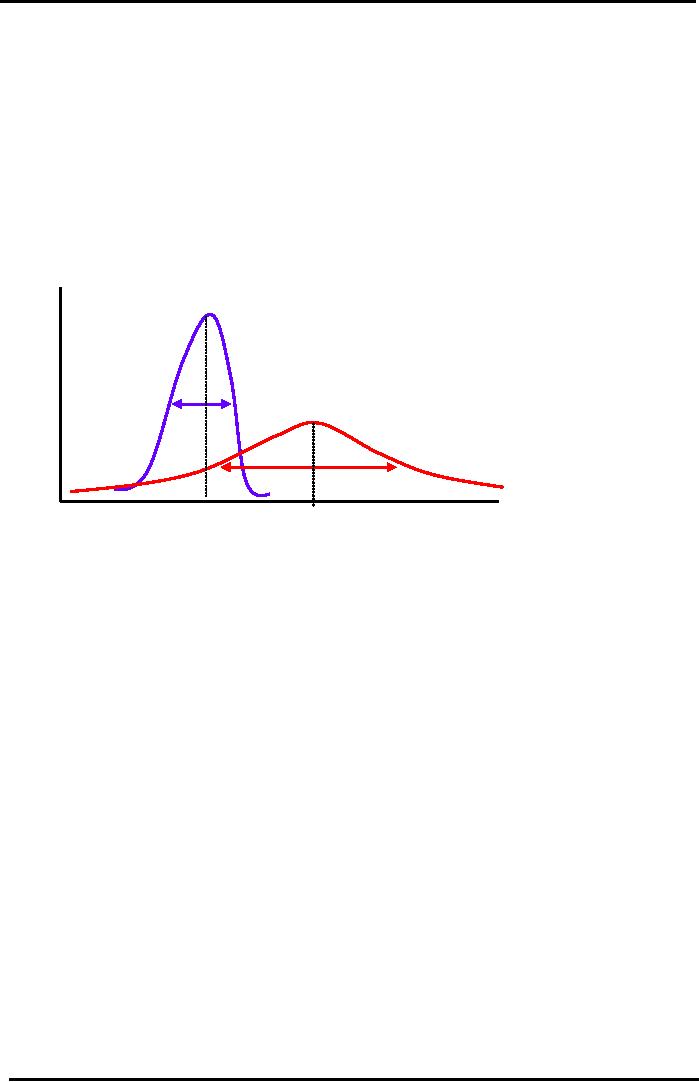
Financial
Management MGT201
VU
Example
of 2 Types of Cement Manufacturing
Technologies: Different OL's
has 2
Impacts:
Different
Risks so Different Betas (CAPM
Approach to Cost of Equity
Capital),
Different
WACC's for 2 Technologies.
Affects Choice of Capital Mix
(or Capital
Structure)
Different
Fixed Costs, Different EBIT
& NI, Different ROE's so
Different
Dividend
Growth Rates "g,"
(Gordon-Dividends Approach to Cost of
Equity
Capital).
So Different WACC's Affects
Choice of Capital Mix.
Visualizing
Operating Leverage (OL)
Impact
on ROE & Capital Structure
Technology
B: Lower
OL:
Pro
Low
Risk & Low ROE
bab
ility
Technology
A: High
OL,
(p)
High
Risk & High
ROE.
Risk
B
Higher
WACC
Risk
A
Expected
ROE
Expected
ROE
=
<ROE>B
=
<ROE>A
Return
on Equity (ROE) %
Now,
let's talk in more detail
about the operating leverage
.in financial management the term
leverage
refers
to the little change in the amount of
sales or quantity of sale
that will affect the over
all earning of
the
company .
Operating
leverage (OL)
=FIXED
COSTS /TOTAL
COSTS
A
company supposes has operating
leverage of suppose 50% or
0.5 it is considered to a high
leverage.
Generally,
it is more risky for a firm
and the fixed cost does
not change. So, the
companies that has
high
leverage
are considered to be more risky .Now, the
companies have to hire the skilled
people and
technicians
specially ,in the capital
intensive industries .now,
let's talk about the
operating
leverage
.let's take the example of
cement industry there are
two ways of technology if you
want to set
a
cement plant one is the old
technology and the other is drying
process new technology
.these two
types
have different costs .we have
learnt that NPV formula is
best for investment decisions in
which
discount
rate r is used which is the required rate
of return .when OL associated
with a firm is higher
then
the risk also becomes higher
.we need to understand the impact of
operating leverage
both
numerically
,and graphically .please go over the
concepts of WACC and
NPV.
132
Table of Contents:
- INTRODUCTION TO FINANCIAL MANAGEMENT:Corporate Financing & Capital Structure,
- OBJECTIVES OF FINANCIAL MANAGEMENT, FINANCIAL ASSETS AND FINANCIAL MARKETS:Real Assets, Bond
- ANALYSIS OF FINANCIAL STATEMENTS:Basic Financial Statements, Profit & Loss account or Income Statement
- TIME VALUE OF MONEY:Discounting & Net Present Value (NPV), Interest Theory
- FINANCIAL FORECASTING AND FINANCIAL PLANNING:Planning Documents, Drawback of Percent of Sales Method
- PRESENT VALUE AND DISCOUNTING:Interest Rates for Discounting Calculations
- DISCOUNTING CASH FLOW ANALYSIS, ANNUITIES AND PERPETUITIES:Multiple Compounding
- CAPITAL BUDGETING AND CAPITAL BUDGETING TECHNIQUES:Techniques of capital budgeting, Pay back period
- NET PRESENT VALUE (NPV) AND INTERNAL RATE OF RETURN (IRR):RANKING TWO DIFFERENT INVESTMENTS
- PROJECT CASH FLOWS, PROJECT TIMING, COMPARING PROJECTS, AND MODIFIED INTERNAL RATE OF RETURN (MIRR)
- SOME SPECIAL AREAS OF CAPITAL BUDGETING:SOME SPECIAL AREAS OF CAPITAL BUDGETING, SOME SPECIAL AREAS OF CAPITAL BUDGETING
- CAPITAL RATIONING AND INTERPRETATION OF IRR AND NPV WITH LIMITED CAPITAL.:Types of Problems in Capital Rationing
- BONDS AND CLASSIFICATION OF BONDS:Textile Weaving Factory Case Study, Characteristics of bonds, Convertible Bonds
- BONDS’ VALUATION:Long Bond - Risk Theory, Bond Portfolio Theory, Interest Rate Tradeoff
- BONDS VALUATION AND YIELD ON BONDS:Present Value formula for the bond
- INTRODUCTION TO STOCKS AND STOCK VALUATION:Share Concept, Finite Investment
- COMMON STOCK PRICING AND DIVIDEND GROWTH MODELS:Preferred Stock, Perpetual Investment
- COMMON STOCKS – RATE OF RETURN AND EPS PRICING MODEL:Earnings per Share (EPS) Pricing Model
- INTRODUCTION TO RISK, RISK AND RETURN FOR A SINGLE STOCK INVESTMENT:Diversifiable Risk, Diversification
- RISK FOR A SINGLE STOCK INVESTMENT, PROBABILITY GRAPHS AND COEFFICIENT OF VARIATION
- 2- STOCK PORTFOLIO THEORY, RISK AND EXPECTED RETURN:Diversification, Definition of Terms
- PORTFOLIO RISK ANALYSIS AND EFFICIENT PORTFOLIO MAPS
- EFFICIENT PORTFOLIOS, MARKET RISK AND CAPITAL MARKET LINE (CML):Market Risk & Portfolio Theory
- STOCK BETA, PORTFOLIO BETA AND INTRODUCTION TO SECURITY MARKET LINE:MARKET, Calculating Portfolio Beta
- STOCK BETAS &RISK, SML& RETURN AND STOCK PRICES IN EFFICIENT MARKS:Interpretation of Result
- SML GRAPH AND CAPITAL ASSET PRICING MODEL:NPV Calculations & Capital Budgeting
- RISK AND PORTFOLIO THEORY, CAPM, CRITICISM OF CAPM AND APPLICATION OF RISK THEORY:Think Out of the Box
- INTRODUCTION TO DEBT, EFFICIENT MARKETS AND COST OF CAPITAL:Real Assets Markets, Debt vs. Equity
- WEIGHTED AVERAGE COST OF CAPITAL (WACC):Summary of Formulas
- BUSINESS RISK FACED BY FIRM, OPERATING LEVERAGE, BREAK EVEN POINT& RETURN ON EQUITY
- OPERATING LEVERAGE, FINANCIAL LEVERAGE, ROE, BREAK EVEN POINT AND BUSINESS RISK
- FINANCIAL LEVERAGE AND CAPITAL STRUCTURE:Capital Structure Theory
- MODIFICATIONS IN MILLAR MODIGLIANI CAPITAL STRUCTURE THEORY:Modified MM - With Bankruptcy Cost
- APPLICATION OF MILLER MODIGLIANI AND OTHER CAPITAL STRUCTURE THEORIES:Problem of the theory
- NET INCOME AND TAX SHIELD APPROACHES TO WACC:Traditionalists -Real Markets Example
- MANAGEMENT OF CAPITAL STRUCTURE:Practical Capital Structure Management
- DIVIDEND PAYOUT:Other Factors Affecting Dividend Policy, Residual Dividend Model
- APPLICATION OF RESIDUAL DIVIDEND MODEL:Dividend Payout Procedure, Dividend Schemes for Optimizing Share Price
- WORKING CAPITAL MANAGEMENT:Impact of working capital on Firm Value, Monthly Cash Budget
- CASH MANAGEMENT AND WORKING CAPITAL FINANCING:Inventory Management, Accounts Receivables Management:
- SHORT TERM FINANCING, LONG TERM FINANCING AND LEASE FINANCING:
- LEASE FINANCING AND TYPES OF LEASE FINANCING:Sale & Lease-Back, Lease Analyses & Calculations
- MERGERS AND ACQUISITIONS:Leveraged Buy-Outs (LBO’s), Mergers - Good or Bad?
- INTERNATIONAL FINANCE (MULTINATIONAL FINANCE):Major Issues Faced by Multinationals
- FINAL REVIEW OF ENTIRE COURSE ON FINANCIAL MANAGEMENT:Financial Statements and Ratios